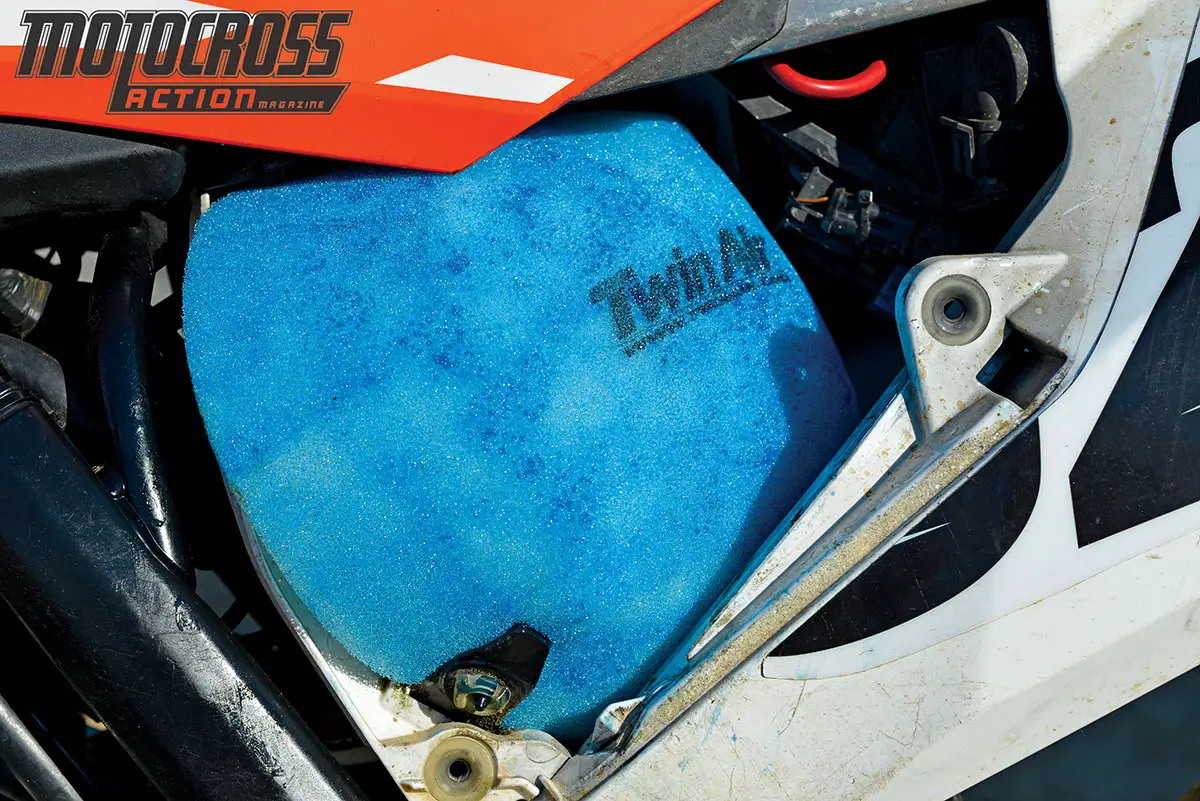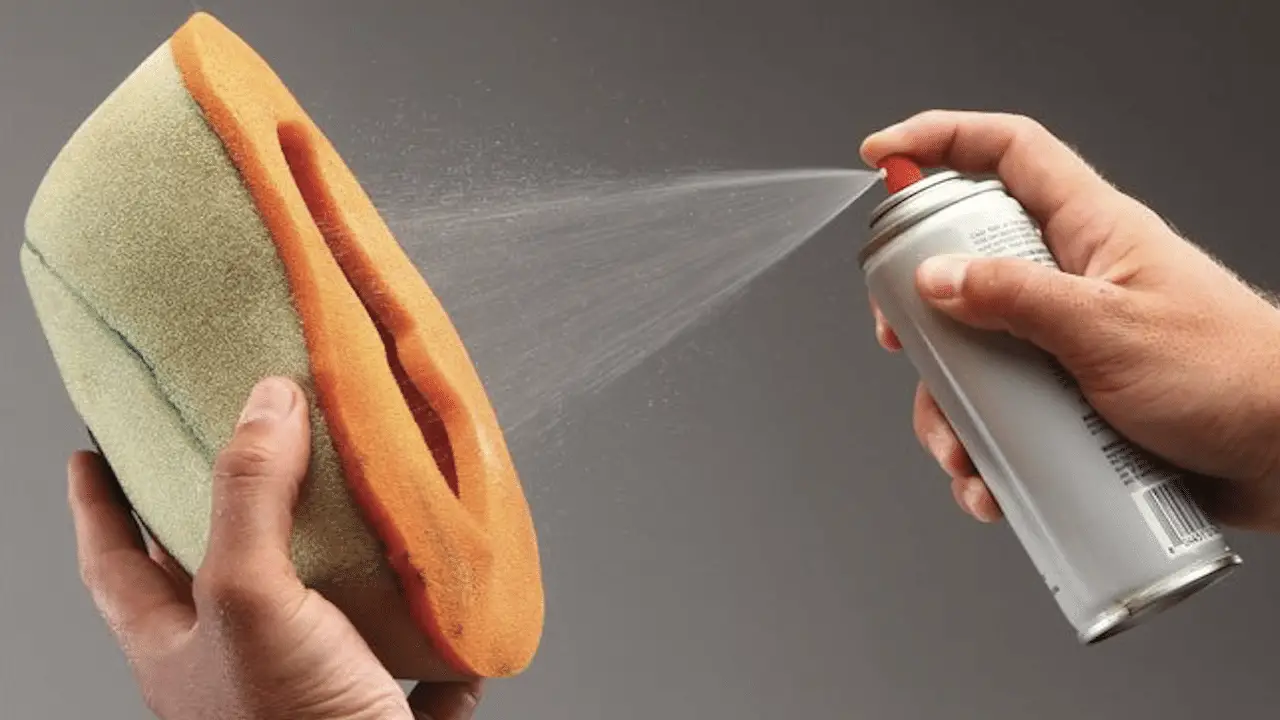TEN THINGS YOU NEED TO KNOW ABOUT AIR FILTER OIL
(1) Paper. Oiled foam and fabric filter elements are used in dirt bikes and other offroad applications, instead of paper filters commonly found in cars, household air filters and, at one time CZs, because foam and fabric have the capacity to hold lots of dirt and continue to keep air flowing. Motorcycle foam filter oil and fabric filter oil starts out as basic petroleum, synthetic or plant/vegetable-based oil. Oils marketed as biodegradable or “bio” are plant-based, but still have some old-fashioned petroleum too. No-Toil claims to offer the only 100-percent plant-based filter oil on the market.
(2) Plant-based. Synthetic oils are very pure and withstand high heats. Companies who use synthetic oils feel like they saturate the filter more evenly and completely. Plant-based oil has several advantages. It is biodegradable and nontoxic, which is compromised when blended with petroleum products. It is easier on your filter, and the foam won’t degrade as quickly. Plant-based oils make cleaning filters easier.
(3) Motor oil. If you are in a real pinch, you could use regular motor oil on your air filter. It is better than nothing. If you are old-school, you have probably done so on many occasions. The problem is that motor oil pools in the airbox, distributes itself unevenly and can be sucked through the intake tract. Air filter oil has special additives blended with the oil to solve these problems.
(4) Alcohol. Isopropyl alcohol is commonly used to help the oil penetrate into the pores of the filter better. It thins out the oil, making it watery and easy to apply. But, the alcohol must be given ample time to evaporate before the filter is used. Otherwise, the oil will get sucked into the intake or even catch fire. Adding alcohol is troublesome, because it classifies the oil as hazardous material. This complicates shipping, storage and exporting. Alcohol also eats the cheaper glue on some filters. As an alternative thinner, No-Toil developed an oil that’s temporarily bonded to water, eliminating the need for alcohol. The drawback is a longer evaporating time.
 A properly oiled air filter is a thing of beauty.
A properly oiled air filter is a thing of beauty.
(5) Tackifiers. Another additive is a “tacker” to help make the oil sticky. Some brands are very tacky, while others argue that thinner oil actually performs better. There is also a chemical that makes filters flame-resistant. DT1 weighed the performance and extra cost of adding an additional layer of flame-resistant foam to their filter (as some other companies do) against the flame-resistant oil; they chose the latter.
(6) Oiled versus dry. Twin Air claims that their tests show, among other things, that a properly oiled filter will flow more air than a bone-dry one and catch more dirt than an over-oiled filter. DT1 has done tests that have shown a full horsepower gain by minimizing the amount of oil on the filter. MXA tests show that a slightly dirty filter is better than a freshly oiled filter. Take your pick.
(7) Cleaner. The type of air filter cleaner used depends on the type of filter oil used. Some cleaners are solvents that cut through petroleum-based oils. After a petroleum-based oil is removed, the filter is still dirty and must be washed with soap and water. Another type of cleaner is detergent made to wash away plant-based oils. With plant-based oils, the harsh-solvents step is skipped. The third type is common gasoline. It will cut through oil better than any filter cleaner/solvent, but it will eat rubber grommets, seals and glues, and degrade foam. After a couple gasoline baths, a foam filter is limp and soggy feeling (even when dry).
(8) Application. The recommended application method for most foam filter oil is to completely saturate the foam and gently squeeze out the excess. Some filter oil comes in a spray can that goes on with the press of a button, but beware of trying to gain performance with a light coat. It will work, but it may cost you. Fabric filters can use spray-on oil or a spouted bottle to place a bead of oil on each pleat. K&N actually has a chart for the optimal quantity of oil for each filter based on surface area.
(9) Storage. If storing your filter oil for more than a day or two, always store it in a metal container, because sealed plastic buckets are too porous. If the oil dries out, it will turn to useless sludge. Although some companies say not to pre-oil and store filters, most companies say it’s okay to pre-oil and store your filters in a ziplock bag, as long as there are some holes to let any alcohol evaporate. MXA always runs pre-oiled filters in our test bikes.
(10) Rain. MXA has used just about every brand of filter oil, from Maxima’s super-tacky FFT synthetic-based oil to No-Toil’s 100-percent plant-based oil. We used to avoid bio-marketed filter oil, because it didn’t seem to stand up to water spray. It is important to know that if your get your bikes filter wet while cleaning your bike, you will need to re-oil the filter. Today’s bio oils are much better, but we still use petroleum filter oil for rain races.





Comments are closed.